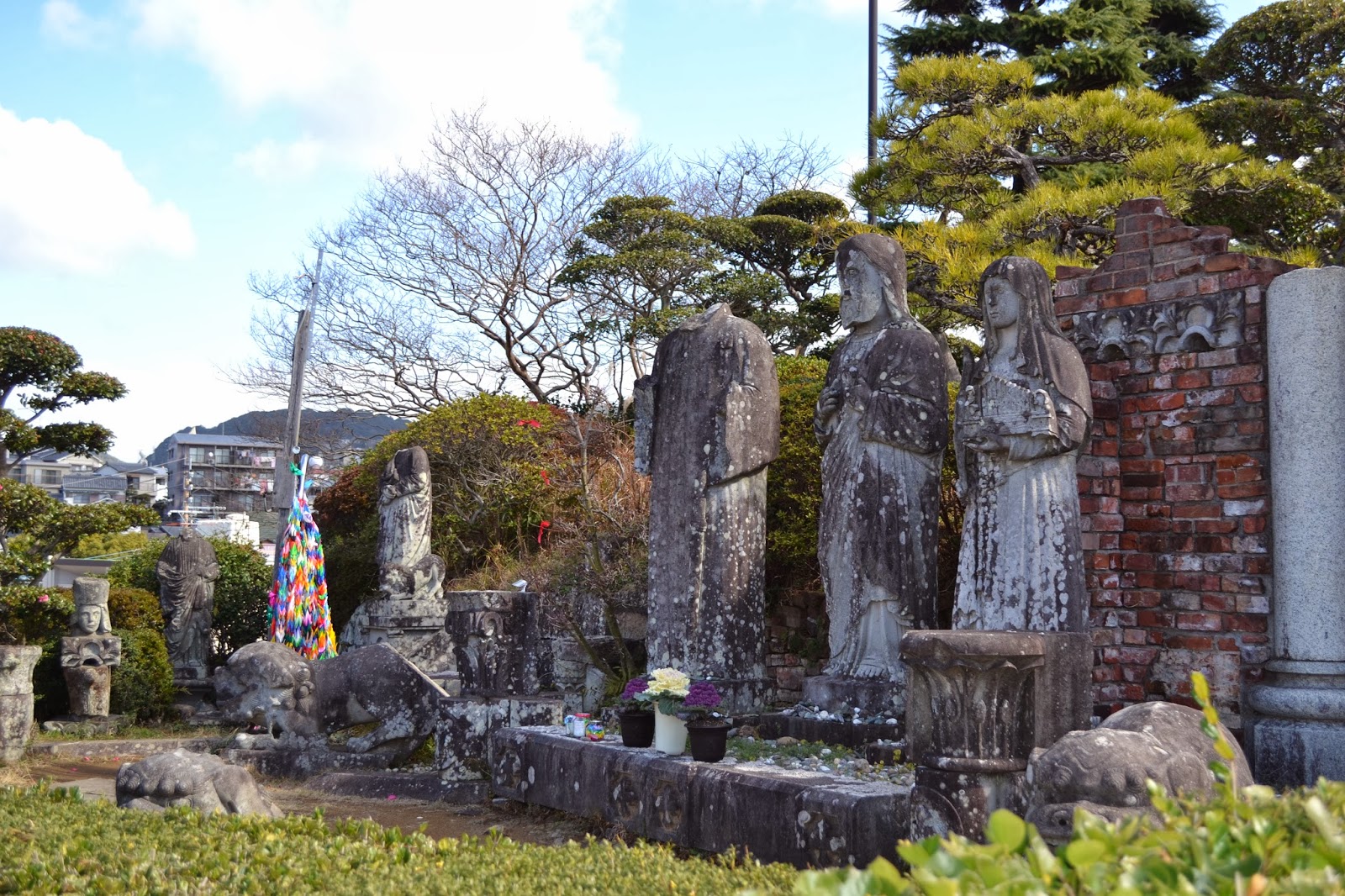 When I first decided to come to Nagasaki, the main reason was because it was the second city in Japan that we used the atomic bomb on. I realized that barely anyone I knew had gone to their atomic bomb museum, but almost everyone had been to Hiroshima -- when most people think of the atomic bomb, they think of Hiroshima, not Nagasaki. Who can beat the classic picture of the A-bomb dome? In this way, Nagasaki is essentially the city victim to a "forgotten" atomic bomb despite the fact that the bomb (nicknamed "Fat Man") was more powerful than the one used in Hiroshima.
When I first decided to come to Nagasaki, the main reason was because it was the second city in Japan that we used the atomic bomb on. I realized that barely anyone I knew had gone to their atomic bomb museum, but almost everyone had been to Hiroshima -- when most people think of the atomic bomb, they think of Hiroshima, not Nagasaki. Who can beat the classic picture of the A-bomb dome? In this way, Nagasaki is essentially the city victim to a "forgotten" atomic bomb despite the fact that the bomb (nicknamed "Fat Man") was more powerful than the one used in Hiroshima.
I've talked about Nagasaki's previous history in earlier posts, so for now we'll focus on the atomic bomb. During WWII, Nagasaki became the city for the production of battleships and cruisers due to the work of Mitsubishi Shipbuilding. Their production was kept secret even from citizens of Nagasaki, and the launch of one of the battleships, Musashi, was done covertly under the cover of air raid drills which kept residents inside their homes.
Nagasaki was victim to quite a few air raids, due to its production of military assets. Despite this, Nagasaki was not one of the initial cities to be considered for the atomic bomb. In fact, the four cities initially selected were Hiroshima, Niigata, Kyoto and Kokura. Hiroshima was first because there were not supposed to be any POW camps there, and Kokura was next. However, due to smoke which prevented visibility Nagasaki became the second city to fall victim when the bomber named Bockscar dropped the bomb "Fat Man".
Seconds later, the wires snapped, the humming stopped, and the plane lurched upward, freed of the great weight. Grammar forgotten in his excitement, Beahan shouted, "Bombs away!" Sweeney wheeled the plane in the sharp, diving turn they had practiced so often, as the single bomb, in its huge trajectory arc, sank quickly toward the ground. Nagasaki was about to become history.- from Nagasaki, The Forgotton Bomb by F.W. Chinnock
At 11:02 on August 9, 1945, Nagasaki experienced an attack from the most powerful atomic bomb ever. This bomb was more powerful than the one used in Hiroshima, yet the death toll remained lower (70,000) because the bomb was off target. The rest is history... walking though the Nagasaki Atomic Bomb Museum, I couldn't help but feel saddened that war had led us to use such terrible weapons.
Below are a few pictures of Nagasaki National Peace Memorial Hall for the Atomic Bomb Victims and the Peace Park. The first picture below is a memorial to the victims; the water represents the water the victims needed but couldn't get. At night 70,000 electric lights illuminate the water, meant to represent the victims.
This was the Remembrance Hall, located inside the memorial, with the victim's names inscribed in the center tower. Standing here you are facing the hypocenter of the bomb.
Below are various statues in front of the museum; I'm not sure what they all meant as some did not have translations.
Above was dedicated to the women who died in Nagasaki.
Where the Olympic flame was temporarily placed
Created for the 50th anniversary of the bomb
Hypocenter of the atomic bomb. To the right you can see the remains of Urakami Cathedral (discussed in an earlier post)
Somewhere above this memorial, that bomb exploded.
Part of the remainder of Urakami Cathedral
A picture that shows the destruction, along with the above portion.
A bunch of origami cranes dedicated to peace
They found this original "ground zero" during excavation but left it near the site for people to see
A lantern that survived the bomb. The black is part of the damage.
Some of the statues near Urakami Cathedral.
Fountain of Peace in the Peace Park. The design is supposed to be reminiscent of dove wings.
This and the following three statues were given later by other countries during subsequent A-bomb anniversaries.
Peace Statue from a distance
A Japanese guy offered to take a picture of me in front of the statue, then yelled at a bunch of Japanese school children who were standing in front of it to move away.
Next to the Peace Statue was a crane monument; you can see the golden crane on top
After the park, I went to the house of Nagai Takashi, a Japanese radiologist who survived the atomic bomb and wrote various Christian-themed books regarding the experiences of the Japanese after the bombing.
The below torii gate was destroyed by the atomic bomb, and only half of it remains standing. The shrine (Sanno Shrine) also had two large camphor trees that survived.

Just as it was in Hiroshima, it's very weird to see the story from other side. It was a very sobering look at the destruction brought on by atomic bombs.





























Thanks for sharing, Kelli.
ReplyDeleteI totally thought those were just tie-dye shirts/dresses. Wasn't until I looked closer and saw that they were all cranes.
ReplyDeleteVery sad.
ReplyDeleteInteresting read. Glad to see your blogs again.
ReplyDeleteThis was lovely thanks for sharing this
ReplyDeletethank you!
Delete